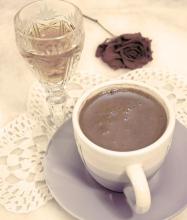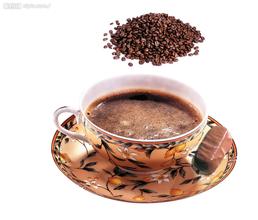Fresh taste Ecuadorian coffee grind degree taste variety flavor description manor introduction
Arabica coffee trees were first introduced to Ecuador in 1952, and their coffee quality is very good, especially when harvested in early June. Ecuadorian coffee beans can be divided into Galapagos (Galapagos) and Gigante (Gigante) two varieties, both have large particles, heavy portions of characteristics. Ecuadorian coffee can be divided into two types according to quality: No.1 and ExtraSuperior. They are mainly exported to the Nordic countries of Scandinavia.
The main problem coffee producers face is trying to maintain consistent quality. The coffee is generally very balanced and refreshing, with a distinctive aroma.
Ecuador is one of the few countries in South America that produces both Arabica coffee and Robaik coffee. But as the land available for arabica coffee trees dwindles, robert coffee production is increasing. The best Arabica coffee is grown in the Andes, especially in the Chanchamgo Valley, which divides into two mountain ranges extending from south to north into central Ecuador
When it comes to Ecuadorian coffee, you have to mention the organic coffee of the Galapagos Islands in Ecuador. Galapagos Islands is a famous tourist attraction, declared by UNESCO as "World Natural Heritage", extremely rich in products, organic coffee is one of the unique. Organic coffee in the Galapagos Islands is recognized as a natural green specialty coffee due to its unique ecological environment such as fertile volcanic soil and microclimate, coupled with its cultivation method without using any fertilizers and pesticides. This naturally grown coffee is mild in taste, with hints of grass, flowers and caramel, and is highly sought after by merchants and coffee lovers.
Creative coffees made from Ecuadorian coffee beans with unique aromas are also popular with consumers. Mr. Veniso, winner of the 2014 Ecuadorian Coffee Competition, won the Ecuadorian Coffee Competition with his creative formula. One espresso is fresh and unique with mint from the Amazon, and the other is fragrant with Ecuadorian rose petals, the Rolls Royce of Roses, that coffee lovers can't stop admiring

Important Notice :
前街咖啡 FrontStreet Coffee has moved to new addredd:
FrontStreet Coffee Address: 315,Donghua East Road,GuangZhou
Tel:020 38364473
- Prev

Description of the Flavor of Kilimanjaro Coffee in Tanzania; introduction to the taste of varieties in producing areas
The types of rainfall can be divided into bimodal distribution and unimodal distribution. The areas with double bee rainfall include the provinces around the Lake Victoria basin, the northeast highlands, the coastal and inland northeastern. The bimodal rainfall area is characterized by two rainy seasons. The short rainy season occurs from September to December. The total rainfall can reach 200-500 mm. The long rainy season occurs from March to May.
- Next

Uganda Coffee Grinding characteristics Variety Flavor description Manor Brand
Uganda is a multi-ethnic country. According to the 1995 Constitution of Uganda, there are mainly 56 tribes in Uganda, such as Ganda, Niakoli, Gege, Sanger and so on. In 2005, after a parliamentary vote, nine new tribes were confirmed, bringing the total number of tribes to 65. Among them, the Ganda is the largest tribe, with a population of 5.53 million, accounting for 18% of the country's population, mainly distributed in Kampala.
Related
- Detailed explanation of Jadeite planting Land in Panamanian Jadeite Manor introduction to the grading system of Jadeite competitive bidding, Red bid, Green bid and Rose Summer
- Story of Coffee planting in Brenka region of Costa Rica Stonehenge Manor anaerobic heavy honey treatment of flavor mouth
- What's on the barrel of Blue Mountain Coffee beans?
- Can American coffee also pull flowers? How to use hot American style to pull out a good-looking pattern?
- Can you make a cold extract with coffee beans? What is the right proportion for cold-extracted coffee formula?
- Indonesian PWN Gold Mandrine Coffee Origin Features Flavor How to Chong? Mandolin coffee is American.
- A brief introduction to the flavor characteristics of Brazilian yellow bourbon coffee beans
- What is the effect of different water quality on the flavor of cold-extracted coffee? What kind of water is best for brewing coffee?
- Why do you think of Rose Summer whenever you mention Panamanian coffee?
- Introduction to the characteristics of authentic blue mountain coffee bean producing areas? What is the CIB Coffee Authority in Jamaica?

